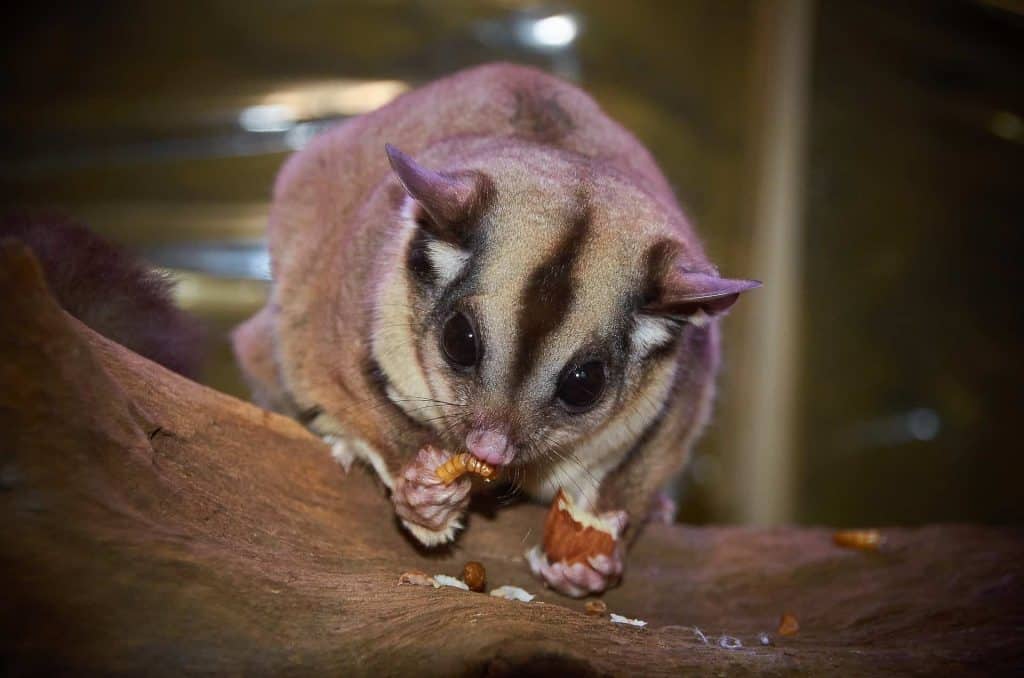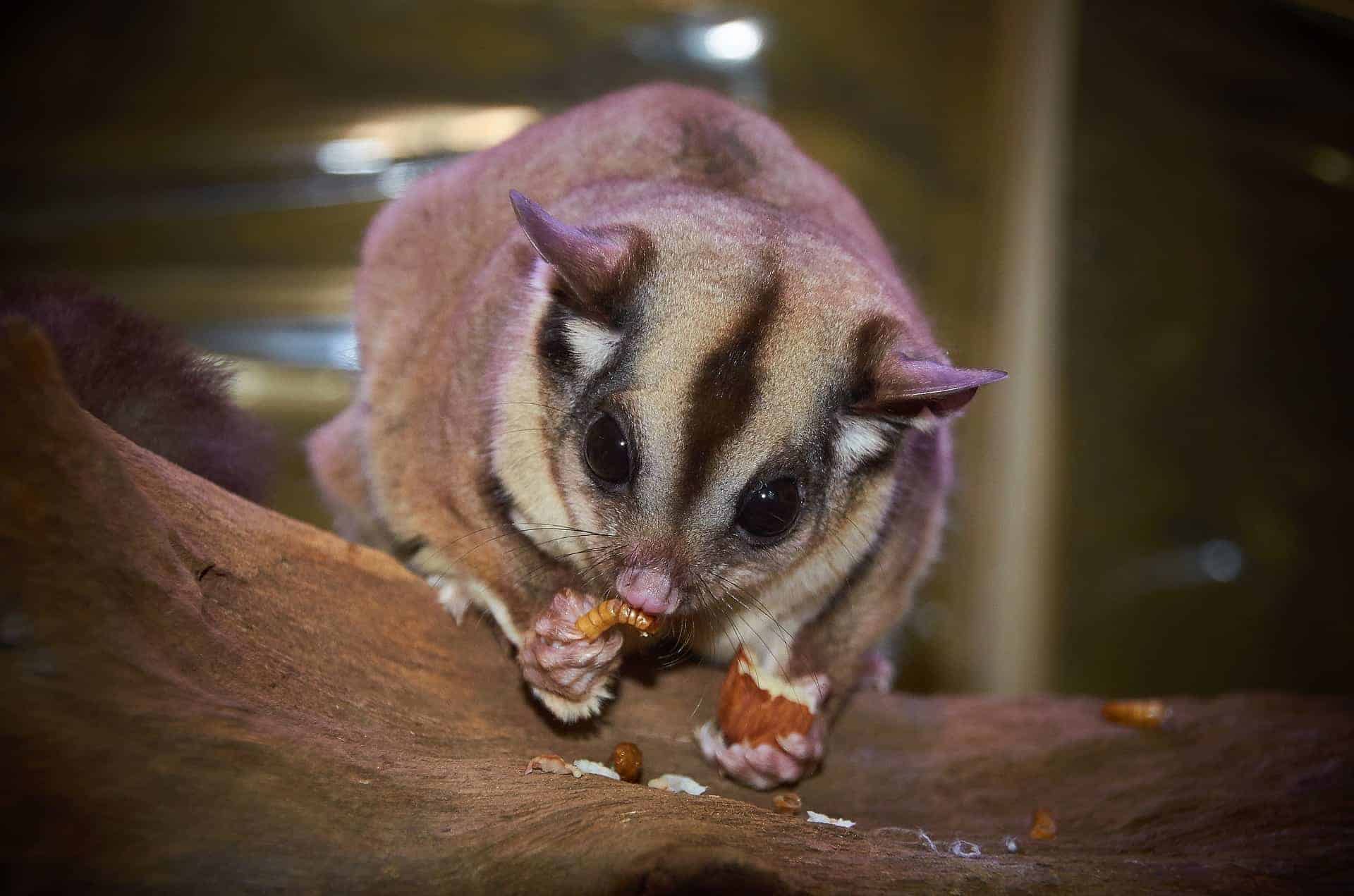One of the most popular debates among sugar glider owners is about heat rocks.
People have been debating their usage for a long time when it comes to these animals.
On the surface, it seems like a convenient way to keep them warm; but there are also legitimate arguments against their use.
Let’s dive into this topic and determine whether a heat rock is an appropriate item for your sugar glider.
Table of Contents
Does Your Sugar Glider Need a Heat Rock?

At first glance, heat rocks look like an attractive item for sugar glider owners to own. They represent an easy way to raise their cage temperature to a more cozy level.
But what owners don’t realize is the potential dangers of their usage.
Heat rocks are known for quickly getting hot spots on them, which can end up causing burns on your glider.
These devices also come with cords that get placed inside your cage. Sugar gliders are notorious for chewing on these wires and getting electrocuted.
As a result, an owner’s attempt to make their glider’s cage cozier could lead to a tragic accident.
I don’t want you to ever to have to experience an outcome like this.
It’s worth noting that sugar gliders don’t even need these rocks to keep warm anyway. These animals are warm-blooded critters capable of warming themselves.
If you’re worried about them being too cold, I’d recommend getting them a friend or warmer pouch.
Sugar gliders will warm each other when things get a little too dicey weather-wise.
ALSO CHECK: Sugar Glider Ornaments and Sugar Glider Gifts
What’s the Best Temperature for Sugar Gliders?
The next logical question to consider is what’s the ideal temperature for these animals?
A sugar glider’s habitat would ideally be between 80 and 88 F at all times.
Of course, this temperature range is a bit difficult to get within a household.
The excellent news is gliders will do fine in any temperature between 65 to 90 F: the prior ranges happen to be ideal.
It’s best to keep them in a warm room, away from air conditioning or heating vents. Direct sunlight into these rooms would also be ideal and conducive to their health.
FYI, the next section contains affiliate links. If you make a purchase through these links, we earn a small commission at no extra charge to you.
How to Keep Your Sugar Glider Warm?
If you’re worried about temperatures dropping below these preferred ranges, a small space heater would be a wise investment.
Place them 2 feet away from the cage and out of the glider’s reach. This placement is crucial to protect your glider from burns.
These space heaters provide the benefits heat rocks should without being a dangerous item to have in a glider’s life.
If your home reaches below 60 degrees in the winter, I highly recommend investing in one.
You could also use double-lined sleeping pouches to help create a cozier environment.
If you live in a more humid region, it might be a good idea to look into buying a dehumidifier.
It’ll help prevent any illness or issue that could be caused by excess moisture.
But honestly, keeping sugar gliders warm isn’t the big deal that most owners think.
These animals will be fine with a typical pouch, nest box, and blankets in any setting over 60 F.
As I mentioned earlier, these fantastic little animals are capable of warming themselves when they’re given a cozy space.
The body heat from two or more sugar gliders in a thick pouch can keep them warm even on the coldest nights.
Related: HOW MUCH DOES IT COST TO ADOPT & OWN A SUGAR GLIDER?
Can You Have Just One Sugar Glider?
I’ve spent a lot of time suggesting getting your sugar glider a companion for warmth purposes.
But the truth is gliders are friendly by nature and function better when with another one.
Of course, this statement doesn’t mean you can’t have a single glider. Several owners have had a great experience owning only one.
But there’s something to know before attempting to own a lone glider. Their friendly nature makes them more susceptible to sugar glider depression when left alone.
A common occurrence with solitary, neglected gliders is them self mutilating.
Lone gliders are known to be less active and harder to bond with, as well.
It doesn’t matter how much attention an owner gives them as you have no chance at replacing what another glider can provide.
A second glider will groom, snuggle, and keep them company at all times.
These areas are simply things even the best owner can’t provide. It’s why most experts and owners recommend getting at least a pair of gliders.
But some gliders do exhibit asocial behavior with other members of their species.
In these situations, the gliders tend to be older and have a neglected past, making them less tolerant of social conditions.
Final Words & Recommendations
I hope these discussions on heat rocks and other temperature-related topics answered your questions.
Long story short: no, your sugar glider does NOT need a heat rock. In fact, it can do far more harm than good.

DO YOU think your sugar glider needs heat rock? SHARE with us BELOW!

My name is Ben Roberts, and I absolutely love animals. So, naturally, I love writing about them too! As far as my animals, I have a Pit-bull, a Beagle-lab mix, a Chihuahua, and one old cat. Each one of them provides me with a new adventure every day. And the best part is they’re all best friends. Well, except the cat when he gets a little annoyed.
FIND HIM ON: FACEBOOK and TWITTER.
Read his latest ARTICLES
Learn more about Benhere



![Cute Sugar Glider Drinking From The Bottle [Must-Watch Video]](https://petsvills.com/wp-content/uploads/2022/09/Cute-Sugar-Glider-Drinking-From-The-Bottle-Must-Watch-Video-211x150.jpg)
